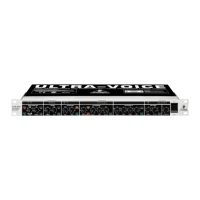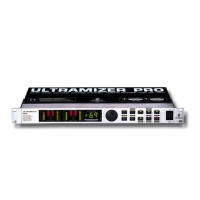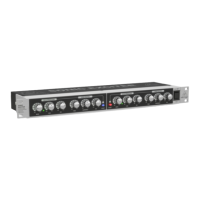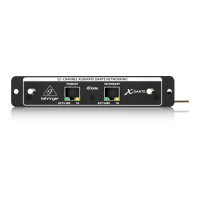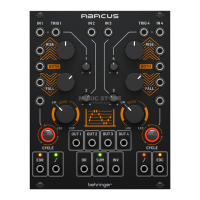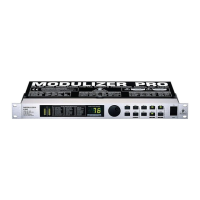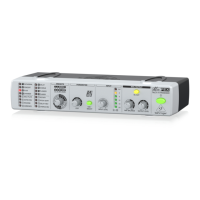8
ULTRA-VOICE VX2000
2. CONTROL ELEMENTS
2.2 Expander and tube emulation
Fig. 2.2: Expander and tube emulation
The expander reduces the signal level during soft passages, so as to eliminate interference such as
tape hiss or crosstalk.
9
Use the IN/OUT switch to activate or bypass the expander in the signal path.
10
The THRESHOLD control adjusts the level above which the expander comes in.
11
The DEPTH control determines the degree of signal reduction. The higher this value, the more signal
reduction is applied.
12
Press the GATE switch to make the expander work like a noise gate, which not only reduces the signal
level during soft passages but cuts it completely. The gate function should therefore be applied to single
signals only, so as to avoid affecting the entire recording.
13
The four GAIN REDUCTION LEDs signal the degree of level reduction applied from -5 through -30 dB.
The tube emulation function allows you to add a subtle distortion or tape saturation effect to vocals.
Known from analog tape recorders and tube amplifiers this effect adds some upper harmonics to the
signal and hence enhances it in the treble range.
14
Use the IN/OUT switch to enable/disable the tube emulation function.
15
The DRIVE control governs the intensity of the saturation effect. The more you turn it to the right (HOT),
the more pronounced the effect will be. The portion of upper harmonics produced also depends on the
input level adjusted in the discrete vintage input stage.
16
The SIG LED lights up when the tube emulation function has been switched on.
17
To avoid internal distortion, the CLIP LED should never light up all the time, but only briefly during very
loud passages.
18
The TUNING control determines the frequency range to be processed with the saturation function. As all
other ranges remain unaffected, you can apply this effect to specific frequency ranges.
19
Press the FULL BW switch to process the entire frequency spectrum. In this case, the TUNING control
is inoperative.
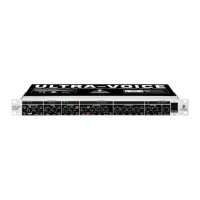
